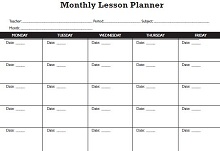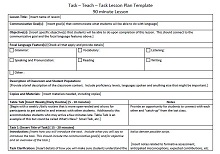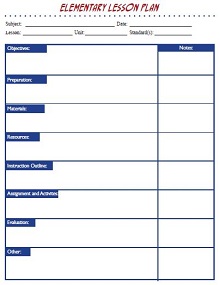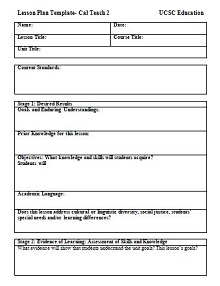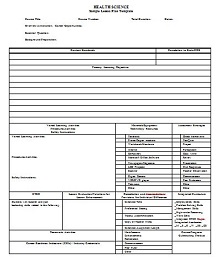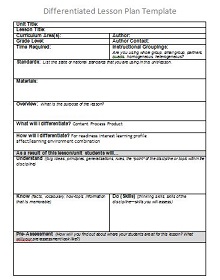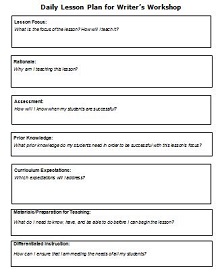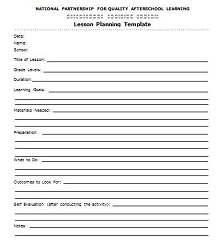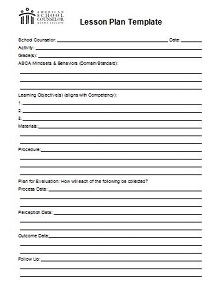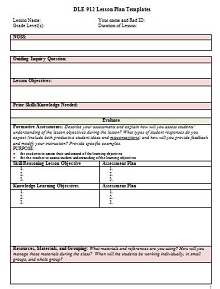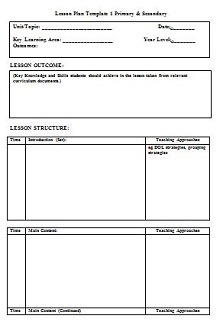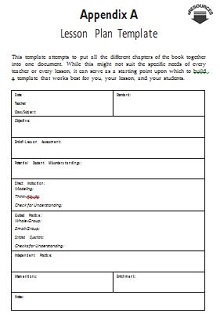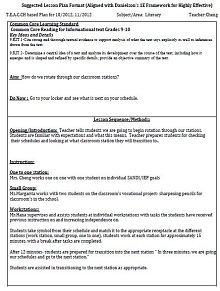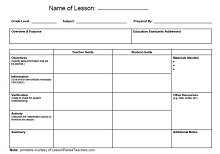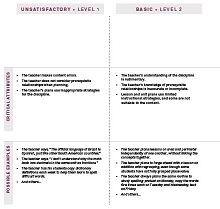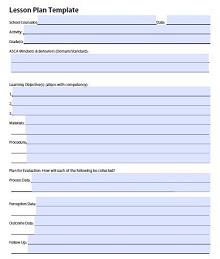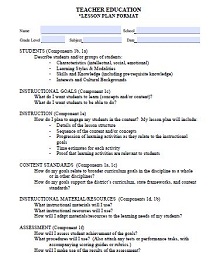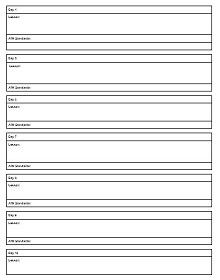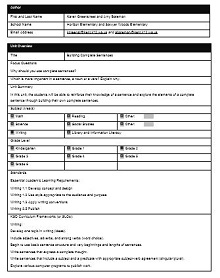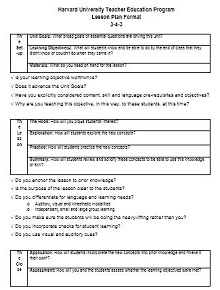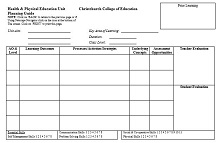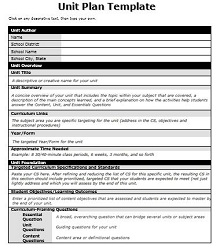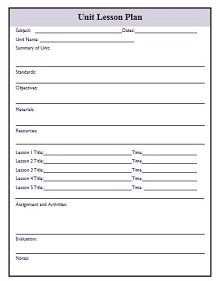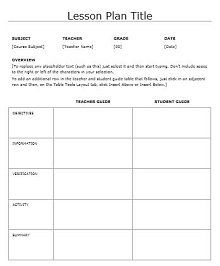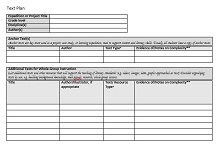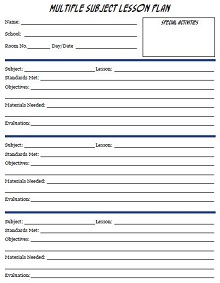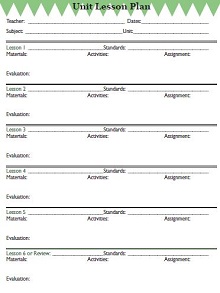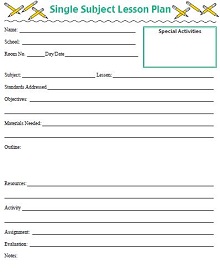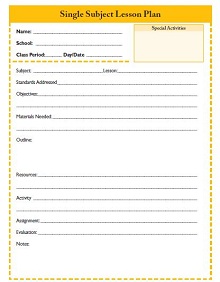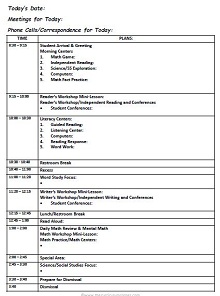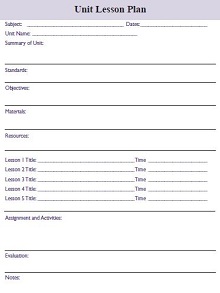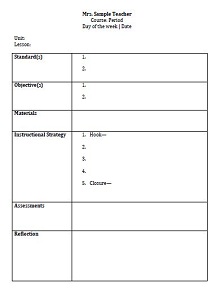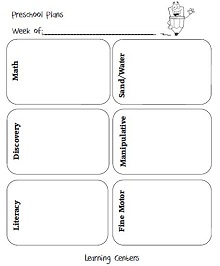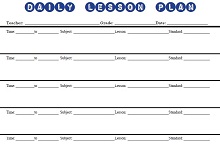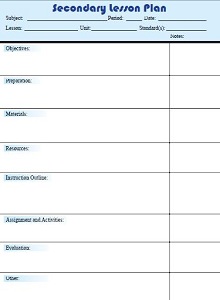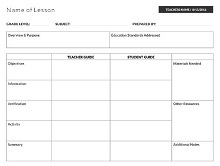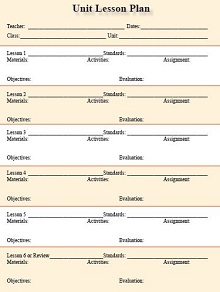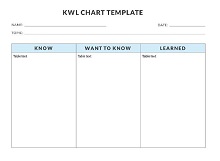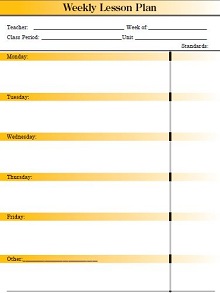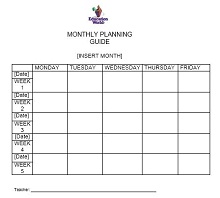45+ Best Lesson Plan & Unit Plan Templates – [PDF, Word]
The lesson plan is a guide that each instructor needs. The lesson plan demonstrates where to begin and where to wrap up. It shows how educators mean to lead their courses, what they are attempting to accomplish, and how they expect to accomplish what they are searching for. The lesson plans are regularly written.
Today, the best lesson plan templates are accessible on different websites. So you can get to that website to locate the correct lesson plan template. Utilizing these templates, you can build up powerful unit plan templates. These lesson plans should list the guidelines and questions you will give the class. Likewise, it needs to incorporate the calendar of every action. Teachers should frequently create a definite lesson plan sample.
Download Free Best Lesson Plan & Unit Plan Templates
What is a Lesson Plan?
A lesson plan is an educator’s strategic playbook. It’s a well-crafted document that outlines the objectives, strategies, and outcomes expected from a specific class session. With 93% of teachers agreeing that students perform better when the lesson is well-structured, the importance of a solid plan becomes crystal clear.
Teachers can modify their teaching plans and meet their classroom’s diverse learning styles and needs. They ensure that each student can access and engage with the lesson content. A well-designed educational blueprint is a map that guides academic exploration so that students are included in the learning journey.
Planning is always significant, no matter the teacher’s experience and knowledge.
Why Are Lesson Plan Templates Important?
Now, teachers can plan rapidly and without much detail at this stage. Any plan or stack of notes in their grasp is the thing that a quality teacher may probably discuss in class.
In any case, paying little heed to their degree of experience, all instructors must report before the semester to think about their courses. Planning is significant because you can not begin an output without knowing where you are going and how you will arrive.
If you don’t have a guide, you won’t realize where to go or how to get to your goal. The outing can, in any case, be fun, yet it is all around liable to get lost, and it’s something that explorers won’t appreciate. Along these lines, planning is significant. If you don’t have a lesson plan, everything will be useless, and your knowledge will have no clue what to do and why. That’s why you must follow the lesson plan template to make a decent lesson plan that will help you and your students.
Critical Components of a Lesson Plan
Academic strategy or plan is the blueprint for effective teaching and learning experiences. A well-crafted learning activity plan should include these essential components:
- Title and Date: Begin the lesson plan with a clear title and date. This helps organize and identify the lesson.
- Objective(s): Clear, concise statements that define what students should know or be able to do by the end of the lesson.
- Materials Needed: A detailed list of resources, textbooks, Technology, and other materials are required for the lesson.
- Standards Alignment: Reference to state or national standards to which the lesson’s objectives are aligned. This is to ensure that the content meets educational benchmarks.
- Lesson Introduction: This engaging starter activity will capture students’ interest and connect the lesson to previous learning or real-world scenarios.
- Instructional Steps: This section provides step-by-step guidance on presenting the lesson’s content, including teacher-led instruction, student activities, and group work.
- Differentiation Strategies: Customized approaches to address the diverse needs of students, such as accommodations for varying skill levels and learning modalities.
- Assessment and Evaluation: Methods to measure student understanding range from formative assessments, like quizzes and discussions, to summative evaluations, like tests and projects.
- Reflection and Notes: Space for teachers to record what worked well, what needs improvement, and ideas for future lessons.
Characteristics Of A Decent Unit Plan Template
These are the three fundamental characteristics of an elegantly composed lesson plan sample. Composing a decent lesson plan takes a great deal of time. Along these lines, if the instructor gets something shortly, he will get into a difficult situation.
In any case, stick to the lesson plan template to get the lesson plan concept more readily. There are numerous lesson plan templates accessible today, including the Common Core Lesson Plan Template, the Preschool Lesson Plan Template, the Weekly Lesson Plan Template, etc. You need to locate the correct lesson plan template for you. Since we’ve discussed the qualities of a perfectly composed lesson plan, it’s an excellent opportunity to consider a decent lesson plan. Characterizing your objectives for a lesson is one of the most significant explanations behind a lesson plan. You must realize what you are attempting to accomplish in class, what you anticipate from your understudies, and how you will achieve it.
A standard core unit plan template must have a sound body and well-organized content. A good unit lesson plan example gives an unpleasant thought of how to get things done in your study hall. A decent lesson plan is a plan that proposes the methodology a teacher should take to show understudies a specific subject while being adaptable enough to enable them to choose for themselves what they want to utilize or not.
Benefits of Using a Lesson Plan
Learning activity plans offer educators many advantages in making an organized, efficient, and effective teaching practice. Here are the benefits of Curriculum Development:
Enhanced Efficiency and Time Management
Utilizing Instructional Design can cut down the time teachers spend on planning. With a pre-defined structure, these lesson plans offer a clear outline, meaning less time is spent thinking about the format and more time developing content. Teachers who use educational planning save an average of 3-5 hours per week, so they have enough time to focus on student interaction and personalized education strategies.
Consistency in Teaching
Teaching Plans build consistency both within the classroom and across different classes. This is essential for meeting curriculum goals and providing a stable learning environment for students. With a consistent structure, students know what to expect daily, which can help reduce anxiety and create a contributory learning atmosphere.
Improved Student Outcomes
A well-structured lesson plan is highly beneficial for student comprehension and retention. Teachers can ensure that every lesson addresses specific educational goals by defining clear objectives and learning outcomes through lesson plans. This leads to a more focused approach to teaching that can have a tangible impact on student achievement. Several studies link structured learning activity plans to improved student performance.
Flexibility with a Framework
Lesson Plans provide a uniform structure and offer flexibility. Teachers can adapt their lesson plans to meet the unique needs of their classes. This means they can incorporate creative teaching methods, address varied learning styles, and adjust the pace without compromising the plan’s integrity.
Increased Professional Development
Using Educational plans contributes to the professional growth of educators. They become habitual thinkers about and articulators of their teaching strategies. Familiarity with different types of lesson plans expands their educational toolkit, making them more versatile and competent professionals in the academic field.
Different Types of Lesson Plans
Teachers have plenty of learning plans to craft the perfect lesson plan, each to meet specific instructional needs. Here are the popular types of curriculum mapping that are transforming today’s educational landscape:
- Traditional Lesson Plan: This follows a standard and includes sections for objectives, instructional materials, procedures, assessment, and reflection.
- Thematic Lesson Plan: Educational planning is designed to organize instructional materials and activities around a central theme or topic.
- Unit Lesson Plan: Used for planning a series of lessons that focus on a specific topic or theme over an extended period. They provide a broader overview of learning goals and activities.
- Subject-Specific Lesson Plan: This incorporates subject-specific teaching strategies and resources for math, science, language arts, or social studies.
- Differentiated Instruction Lesson Plan: This includes strategies to accommodate diverse student needs, including modifications, accommodations, and alternative assessments.
- Unique Education Lesson Plan: These lesson plans include accommodations, modifications, and specialized instructional strategies designed to meet the unique needs of students with disabilities.
- Online Course Lesson Plan: These lesson plans, crafted for online or blended learning environments, focus on digital resources, multimedia integration, and online assessment methods.
- Daily Lesson Plan: These plans focus on the day-to-day teaching objectives, detailing the activities and learning outcomes expected for each class session. They are ideal for teachers who prefer to map out every class period precisely.
- Weekly Lesson Plan: Provide a broader overview of educational goals, allowing educators to organize a series of lessons and activities over a week. They help to ensure a cohesive flow of instruction and balance different types of learning experiences to maintain student engagement.
- Monthly Lesson Plan: give teachers a long-term perspective and encourage them to visualize the progression of their curriculum over an entire month. This helps to align lessons with overarching themes and academic goals.
How to Create a Lesson Plan Template?
Creating an academic strategy template can simplify the teaching process and ensure that you cover all necessary aspects of your lessons. Here are six steps to crafting a practical template.
Select a Digital Tool
Begin by choosing a user-friendly digital platform or tool to meet your specific needs for creating a lesson plan template. Popular options include Google Docs for its real-time collaboration features, Microsoft Word for its familiar interface and wide range of templates, or specialized education tools like Planboard that offer more tailored functionalities for lesson planning. Some platforms also offer mobile apps for flexibility and convenience.
Create a Design
Once you have selected your digital tool, create a blank document or template to serve as the foundation for your lesson plans. This template should include sections for essential elements such as lesson objectives, materials needed, activities and assessments, and any other components relevant to your teaching style and subject matter.
Personalize Design Elements
Take some time to personalize your template by adding your name, school logo, or any other design elements that reflect your teaching style and make the template more visually appealing. You can also include a section for lesson notes or reflections to track any adjustments or changes made during the planning process.
Organize your Lesson Plans
With your template ready, it’s time to start organizing your lesson plans. One approach is using a separate document or page for each lesson, allowing easy navigation and editing. Alternatively, you can use a spreadsheet or table format to create a weekly or monthly overview of all your lessons.
Include Relevant Standards and Objectives
As you fill in your lesson plan template, align it with relevant educational standards or learning objectives. This will help guide your planning process and ensure your lessons meet the required criteria and goals.
Incorporate Differentiated Instruction
One of the benefits of using a digital tool for lesson planning is the ease with which you can incorporate differentiated instruction techniques. For example, you can use color-coding, highlighting, or different font styles to indicate difficulty levels or accommodations for students with diverse learning needs.
Update and Revise
As you use your lesson plan template, regularly update and revise it based on student needs, outcomes, and any new ideas or strategies you may want to incorporate. This will ensure your lessons remain relevant and practical throughout the school year.
How to Customize a Lesson Plan Template to Fit Your Teaching Style
Customizing a lesson plan template to fit your teaching style is an effective way to ensure that your plans align with your teaching approach and meet the needs of your students. Here are some steps you can follow:
- Select a suitable template: Begin by choosing a lesson plan template that provides a basic structure but is flexible enough for customization. Look for a template that includes critical elements such as objectives, instructional activities, assessment methods, and materials needed.
- Evaluate your teaching style: Reflect on your teaching style and philosophy. Consider the strategies you typically employ in the classroom and the best methods for your students. Think about your preferred modes of instruction, assessment techniques, and student engagement strategies.
- Assess your students’ needs: Understand the needs and interests of your students. Identify their learning preferences, strengths, and challenges. Consider adapting the lesson plan template to cater to their diverse needs.
- Modify the template structure: If the selected template does not align with your teaching style, modify it to suit your requirements better. Consider the following adjustments:
- Rearrange sections: You can customize the template by arranging the order or structure of the sections to suit your needs. For example, if you prefer to introduce new concepts before stating the objectives, you can do so.
- Add or remove sections: Add or delete unnecessary sections to make the template more relevant and comprehensive. For instance, include a section for differentiation strategies or an extension activity.
- Adjust formatting: Make changes to the formatting, fonts, or colors to enhance the template’s visual appeal and match your style.
- Adapt language and terminology: Modify the language and terminology used in the template to align with your preferred teaching style. Ensure it reflects the tone and instructional approach you use in the classroom.
- Incorporate teaching strategies: Customize the template by incorporating the teaching strategies that you find most compelling. For example, if you frequently use cooperative learning techniques, include a section for group activities or collaborative projects.
- Personalize assessment methods: Adjust the template’s suggested assessment methods to suit your teaching style and student’s learning needs. Consider different ways to assess understanding, such as formative assessments, peer evaluations, or self-reflection tasks.
- Include instructional materials: Amend the template to include the specific instructional materials, resources, or technology tools you prefer to use or are appropriate for the lesson. Be sure to ensure their availability and accessibility.
- Consider timing and pacing: Modify the template to match the timing and pacing that works well for you and your students. Some teachers prefer detailed time breakdowns, while others prefer more flexible structures. Customize the template to reflect your preferred approach.
- Test and refine: Once you have customized the lesson plan template to fit your teaching style, try it out in your classroom. Seek feedback from students and colleagues and make adjustments as necessary. Continuously refine and improve the template to enhance its effectiveness over time.
Conclusion
All of these best lesson plan templates are available on our site. The lesson plan template is widespread and is almost needed by most teachers worldwide. A decent lesson plan example consistently contains loads of data. The data in the right lesson plan incorporates potential issues you may experience during the course.
What’s more, the unit plan sample gives answers to these issues. Also, these samples and templates give you a birds-eye view of any topic you have to deliver in any class or presentation.

